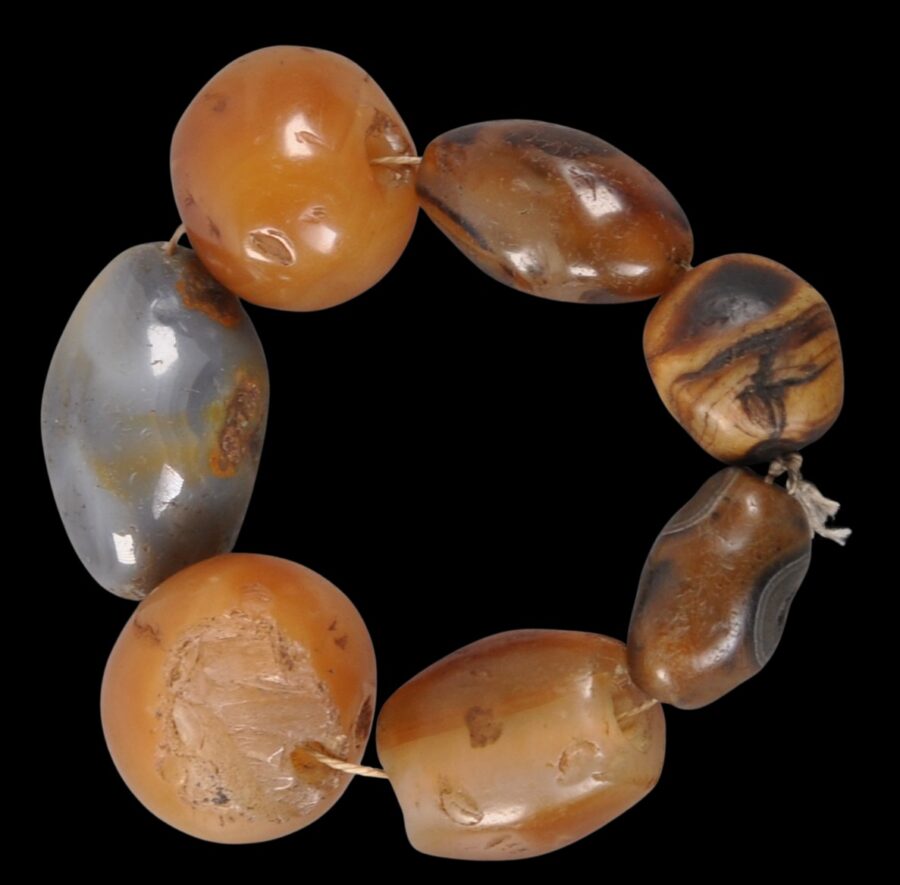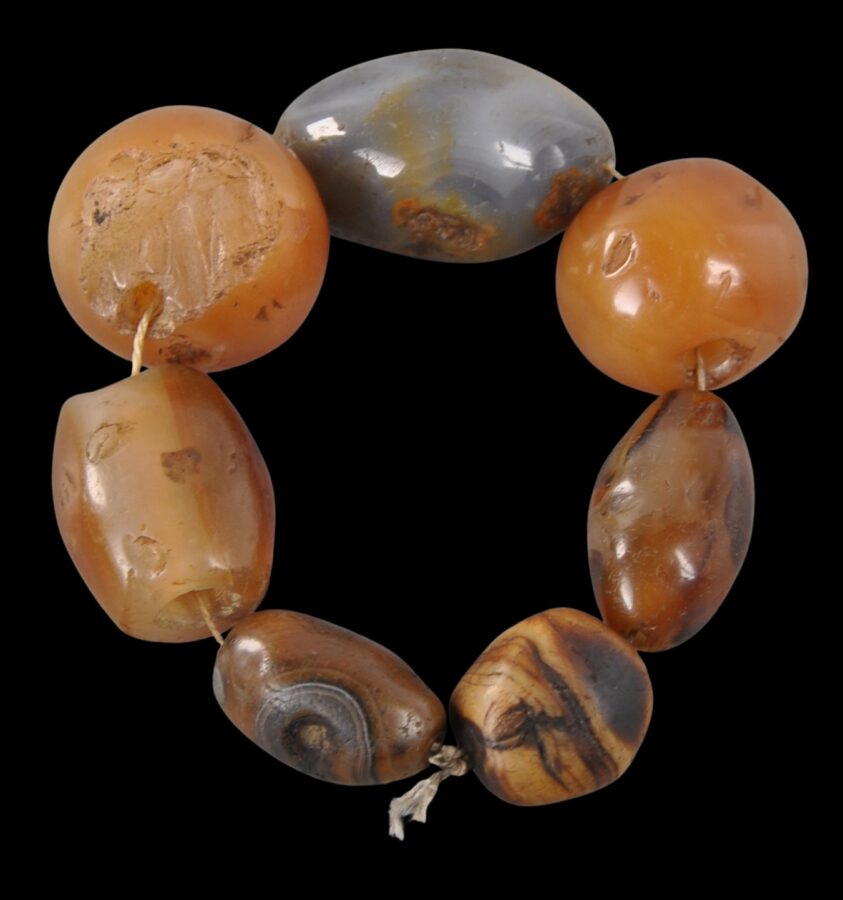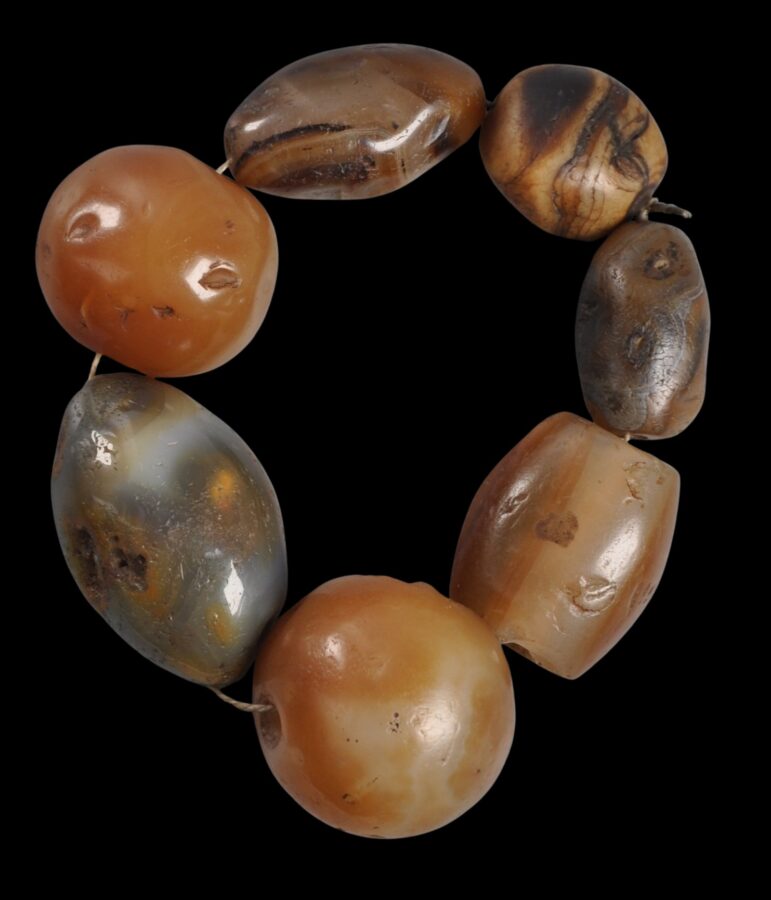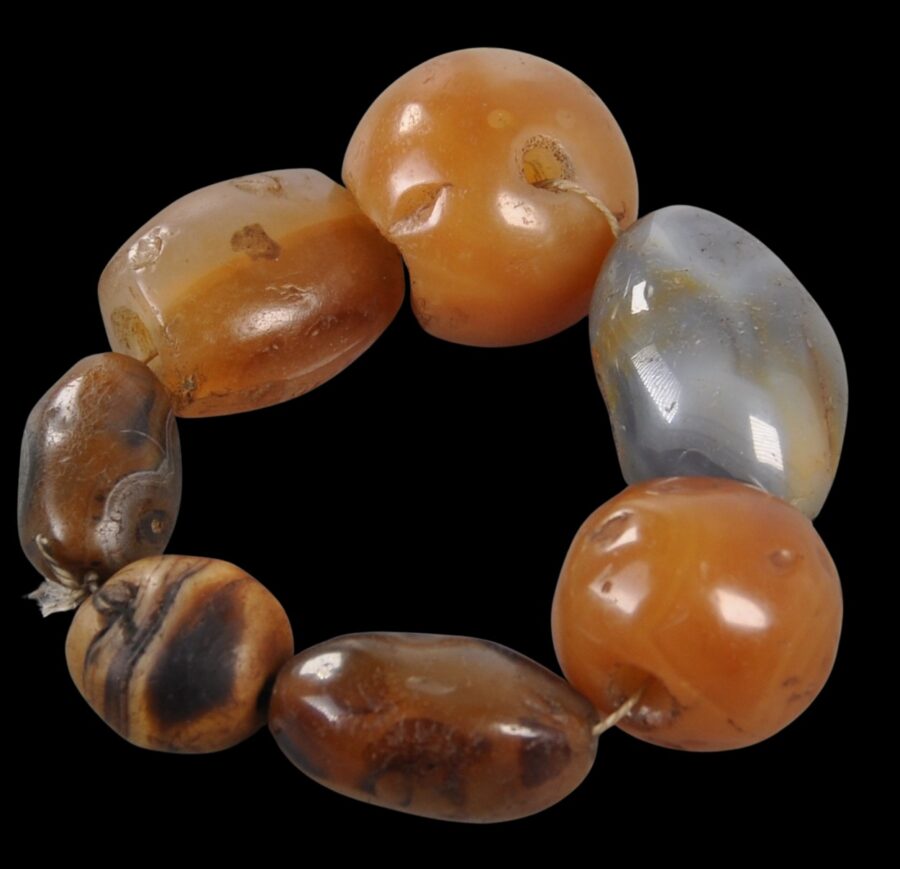Enquiry about object: 9840
Ancient Indus Valley Agate Beads used in Tibet
Indus Valley for the Himalayas, probably Tibet, & Elsewhere Ancient
length of beads: between 2 and 3.7cm, diameter of beads: between 1.5 and 3cm, weight: 113g
Provenance
private collection, Canada. The collection was carefully assembled over the last 50 years.
This ancient and masculine selection of seven carnelian and agate beads would have been worn in Tibet almost certainly by a man for their protective, amulet properties.
Each bead has been hand-drilled with a single central hole for threading, and each has great wear and obvious patina.
The carnelians most probably have their origins in the Indus Valley, where the Harappa culture flourished. (Later, the area emerged as the Cambay region of Gujarat, West India, where carnelians have been sourced and supplied to export markets in the Middle East and elsewhere for at least a thousand years.)
Tibetans were attracted to the ancient origins of the beads and so they found a ready market in Tibet.
The beads here range from spherical beads, to oval shaped examples and those more of barrel form. Some are slightly banded, and others have a more consistent colouring.
Several are chipped and the chips themselves have much patina and wear suggestive of their great antiquity. Such chipping would have been seen by Tibetans as consistent with the beads absorbing poison or danger on behalf of their owners and then splitting, in the manner that Tibetan dzi beads also provided the wearer with protection.
Overall, this intriguing and special strand of seven agate beads has much presence and wear.
References
Allen, J., ‘Tibetan zi beads’, in Arts of Asia, July-August 2002.
Francis, P., ‘Beads of the early Islamic period’ in Beads: Journal of the Society of Bead Researchers, Vol 1, 1989.
Untracht, O., Traditional Jewelry of India, Thames & Hudson, 1997.







